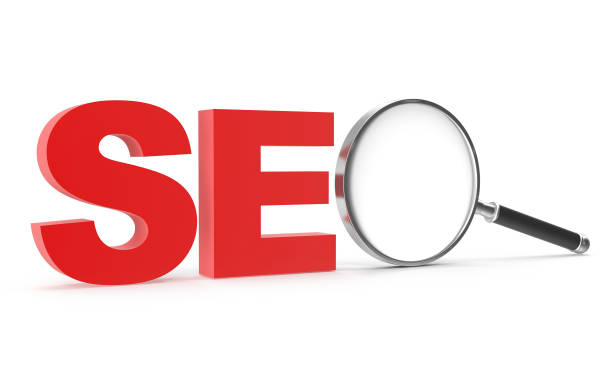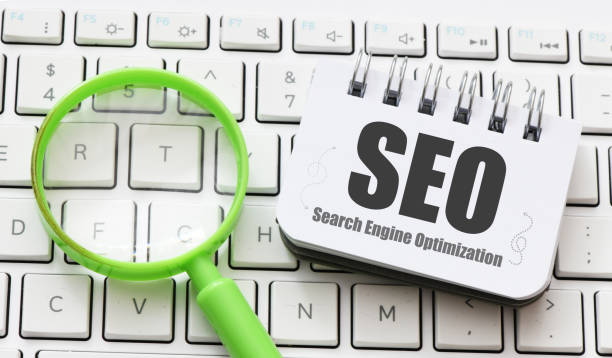What is SEO and why is it important?
SEO, or Search Engine Optimization (SEO), is a set of techniques and strategies used to improve a website’s ranking in search engine results like Google.
The main goal of SEO is to increase the visibility of a website for users who are looking for information, products, or services related to it.
Google’s algorithms are constantly changing, so understanding the basic principles of SEO and staying up-to-date with the latest trends is essential for online success.
The importance of SEO is due to several key reasons.
Firstly, organic traffic (traffic that comes through search results) is usually of higher quality than other types of traffic.
Users who reach your website through search are more likely to be looking for something you offer, and this increases the conversion rate.
Secondly, SEO is a long-term investment.
While paid advertising can produce immediate results, SEO gradually improves your website’s ranking and creates sustainable traffic.
Thirdly, a strong presence in search results increases the credibility and trust of your brand.
Users trust websites that rank high more.
Therefore, investing in SEO is essential for any business that wants to succeed in the online world.
#SEO is a continuous process and requires patience and perseverance.
However, with effort and persistence, you can improve your website’s ranking and attract more traffic.
In short, SEO is essential for increasing website visibility, attracting quality traffic, and building brand credibility.
In later chapters of this article, we will examine different aspects of SEO and how to implement them.
Does your company’s website create a professional and lasting first impression on potential customers? Rasaweb, with professional corporate website design, not only represents the credibility of your brand, but also opens a path for the growth of your business.
✅ Create a powerful and reliable brand image
✅ Attract target customers and increase sales
⚡ Get free consultation
Keyword Research – Finding the Best Terms for SEO
Keyword research is the cornerstone of any successful SEO strategy.
This process involves identifying the words and phrases that users enter into search engines to find information, products, or services related to your business.
The goal of keyword research is to find terms that have both high search volume and low competition.
Click here to preview your posts with PRO themes ››
There are various tools available for keyword research, including Google Keyword Planner, Ahrefs, SEMrush, and Moz Keyword Explorer.
These tools help you analyze search volume, competition level, and other important metrics for different keywords.
You can also use Google’s suggestion tools like Google Trends to identify search trends and related keywords.
When choosing keywords, consider the following:
- Relevance: Keywords should be directly related to the content of your website.
- Search Volume: Keywords should have a significant search volume to attract adequate traffic.
- Competition: Keywords should have relatively low competition to increase the chances of ranking in search results.
- Search Intent: Consider the user’s intent when searching for the keyword.
Is the user looking for information, buying a product, or doing something specific?
Keywords can be divided into three main categories:
- Head Keywords: General and popular keywords with high search volume but also high competition.
- Long-Tail Keywords: Long and specific keywords with lower search volume but also lower competition.
These keywords are usually more targeted and have higher conversion rates. - Location-Based Keywords: Words that refer to a geographical location and are very important for local businesses.
After finding the right keywords, use them naturally and strategically in your website’s content, including titles, meta descriptions, body text, and image tags.
On-Page SEO – Optimizing Website Structure and Content
On-page SEO (On-page SEO) refers to optimizing elements within your website that affect its ranking in search results.
This includes optimizing website structure, content, title tags, meta descriptions, URLs, and images.
Website Structure: A good website structure should be easy to navigate and help search engines easily find and index your content.
Use a logical hierarchical structure and make sure each page is linked to other relevant pages via internal links.
Content: High-quality, unique content that is relevant to target keywords is the most important factor in on-page SEO.
Your content should be useful and engaging for users and answer their questions.
Use proper formatting (headings, subheadings, paragraphs, lists) for better readability and place keywords naturally and strategically in your text.
Click here to preview your posts with PRO themes ››
Title Tags: Title Tags specify the title of each page and are displayed in search results.
Title tags should be short, attractive, and contain the page’s main keyword.
Each page should have a unique title tag.
Meta Descriptions: Meta Descriptions provide a summary of the page’s content and are displayed below the title tag in search results.
Meta descriptions should be attractive and persuasive, encouraging users to click on your link.
Use relevant keywords in meta descriptions.
URLs: URLs should be short, descriptive, and contain relevant keywords.
Avoid using long and incomprehensible URLs.
Images: Images should be optimized to reduce file size and increase page loading speed.
Use Alt tags to describe images and place relevant keywords in these tags.
Example of using alt tag:

On-page SEO is a continuous process and should be reviewed and updated regularly.
| On-Page SEO Element | Importance | Description |
|---|---|---|
| Title Tag | Very High | Specifies the title of the page and is displayed in search results. |
| Meta Description | High | Provides a summary of the page’s content and is displayed below the title tag in search results. |
| Content | Very High | High-quality, unique content that is relevant to target keywords. |
| Website Structure | High | A good website structure should be easy to navigate and help search engines easily find and index your content. |
Off-Page SEO – Building Authority and Increasing Rank Through Backlinks
Off-page SEO (Off-page SEO) refers to activities that are performed outside of your website and affect its ranking in search results.
The most important aspect of off-page SEO is building backlinks.
Backlinks are links from other websites that point to your website.
Search engines use backlinks as a vote of confidence, and the higher the number and quality of your backlinks, the higher your website will rank.
There are various methods for building backlinks, including:
- Producing Quality Content: High-quality and unique content naturally attracts backlinks because other websites link to it.
- Content Marketing: Share your content on social media, forums, and other online platforms to increase its visibility and attract backlinks.
- Building Relationships: Connect with other websites and influencers related to your field and ask them to link to your website.
- Participating in Interviews and Events: Participating in interviews and events related to your field can be an opportunity to earn backlinks from reputable websites.
- Link Exchange: Exchange links with other relevant websites.
(Note that excessive link exchange can be harmful.) - Registering Website in Directories: Register your website in reputable online directories.
When building backlinks, consider the following:
- Quality: Backlinks should be from reputable websites that are relevant to your field.
- Diversity: Backlinks should be from various sources (websites, blogs, forums).
- Relevance: Backlinks should point to pages on your website that are relevant to the content of the linking website.
- Anchor Text: Anchor Text should contain relevant keywords.
Note that building backlinks is a time-consuming and continuous process.
Avoid unethical methods (such as buying backlinks) as it may result in your website being penalized by search engines.
Does your current corporate website reflect the credibility and power of your brand as it should? Rasaweb with professional corporate website design solves this challenge for you.
✅ Increase visitor credibility and trust
✅ Attract more targeted customers
⚡ Click here to receive a free consultation!
Technical SEO – Optimizing Website Technical Aspects for Search Engines
Technical SEO (Technical SEO) refers to optimizing the technical aspects of your website that affect how search engines crawl, index, and rank it.
This includes optimizing website speed, mobile-friendliness, XML sitemap, Robots.txt file, SSL, and URL structure.
Website Speed: Website speed is an important ranking factor.
Users expect websites to load quickly, and search engines also prefer faster websites.
To improve your website speed, optimize images, use browser caching, and use a CDN.
Mobile-Friendliness: Most internet users use mobile devices to search, so it is essential that your website is mobile-friendly.
Your website should automatically adjust the screen size and be optimized for mobile devices.
XML Sitemap: An XML sitemap is a file that lists all the pages of your website and helps search engines easily find and index your content.
Create an XML sitemap and submit it to Google Search Console.
Robots.txt File: The Robots.txt file is a text file that tells search engines which pages of your website should not be crawled.
Use this file to prevent crawling unnecessary pages (such as administration pages).
SSL: SSL is a security protocol that encrypts the communication between your website and users’ browsers.
Having SSL is essential for your website as it assures users that their information is secure.
Also, Google prefers websites that use SSL.
URL Structure: The URL structure should be logical and descriptive.
Avoid using long and incomprehensible URLs.
Use relevant keywords in URLs.
In short, technical SEO is essential to ensure that search engines can easily crawl, index, and rank your website.
By optimizing the technical aspects of your website, you can improve its ranking in search results and attract more traffic.
Mobile Optimization – Delivering a Great User Experience on Mobile Devices
Given the increasing use of mobile devices to access the internet, optimizing your website for mobile (Mobile-First Indexing) is of utmost importance.
A mobile-optimized website should be fast, easy to navigate, and have content accessible on smaller devices.
To optimize your website for mobile, consider the following:
- Responsive Design: Use a responsive design that automatically adjusts the screen size and is optimized for different devices.
- Loading Speed: The loading speed of the website on mobile should be fast.
Optimize images, use browser caching, and use a CDN. - Easy Navigation: The navigation menu should be easy to use on touch devices.
Use large buttons and sufficient whitespace. - Accessible Content: Website content should be easily readable on smaller devices.
Use large fonts and short paragraphs. - Simple Forms: Website forms should be simple and easy to fill out on mobile devices.
Use fewer fields and use auto-completion. - Minimize Pop-ups: Avoid displaying intrusive pop-ups on mobile devices.
Since 2019, Google has been using Mobile-First Indexing, meaning that the mobile version of your website is considered for ranking in search results.
Therefore, optimizing your website for mobile is essential for SEO and user experience.
To test your website’s mobile-friendliness, you can use Google’s Mobile-Friendly Test tool.
SEO Analysis and Reporting – Measuring Performance and Improving Strategy
Analysis and reporting is an important part of any SEO strategy.
By measuring the performance of your website, you can identify your strengths and weaknesses and adjust your strategy to improve results.
There are various tools available for SEO analysis and reporting, including Google Analytics, Google Search Console, Ahrefs, and SEMrush.
These tools help you track various metrics such as organic traffic, keyword ranking, conversion rate, bounce rate, and time on page.
The most important metrics to consider in SEO analysis are:
- Organic Traffic: Traffic that comes to your website through search results.
- Keyword Ranking: Your website’s ranking for target keywords.
- Conversion Rate: The percentage of users who perform a specific action (such as buying a product or signing up for a newsletter).
- Bounce Rate: The percentage of users who leave your website after viewing one page.
- Time on Page: The amount of time users spend on each page of your website.
By analyzing these metrics, you can gain a deeper understanding of how your website is performing and adjust your SEO strategy accordingly.
For example, if you notice that your organic traffic has decreased, you may need to revise your keywords or create new content.
If your bounce rate is high, you may need to improve your website design or create more engaging content.
In short, SEO analysis and reporting is essential for measuring website performance, identifying strengths and weaknesses, and improving your SEO strategy.
By using the right tools and analyzing the data, you can make more informed decisions and improve your website’s ranking in search results.
| SEO Metric | Description | Importance |
|---|---|---|
| Organic Traffic | Number of website visitors through search | Very High |
| Keyword Ranking | Website position in search results for keywords | High |
| Conversion Rate | Percentage of visitors who complete a specific goal | Medium |
| Bounce Rate | Percentage of visitors who leave the website after viewing one page | Medium |
Local SEO – Attracting Customers in Your Geographic Area
Local SEO (Local SEO) refers to optimizing your website and online presence to attract customers in your geographic area.
This is very important for businesses that offer their services or products locally, such as restaurants, stores, and barbershops.
To improve your local SEO, consider the following:
- Register in Google My Business: Register your business in Google My Business and provide accurate and complete information about your business, including name, address, phone number, business hours, and category.
- Optimize Website for Local Keywords: Use local keywords (such as city or region name) in the titles, meta descriptions, and content of your website.
- Get Positive Reviews: Ask your customers to leave positive reviews about your business on Google My Business and other online platforms.
- Create Local Links: Get links from local websites (such as online directories and local blogs).
- Presence on Social Media: Be active on social media and share content related to your geographic area.
- Create Location Pages: If you have multiple locations, create a separate page on your website for each location and provide specific information about that location on that page.
By improving your local SEO, you can rank higher in Google’s local search results (such as Google Maps) and attract more customers from your geographic area.
Does your current website show the credibility of your brand as it should? Or does it scare away potential customers?
Rasaweb, with years of experience in designing professional corporate websites, is your complete solution.
✅ A modern, beautiful and brand-appropriate website
✅ Significant increase in lead capture and new customers
⚡ Contact Rasaweb now for a free corporate website design consultation!
Evergreen Content – Creating Lasting Content for SEO
Evergreen Content (Evergreen Content) refers to content that remains relevant and useful for a long time and does not lose its value over time.
This type of content is very valuable for SEO because it consistently attracts organic traffic and does not require frequent updates.
Examples of evergreen content include:
- Educational guides
- Defining articles
- Case studies
- Lists
- FAQs
To create evergreen content, consider the following:
- Choosing Lasting Topics: Choose topics that do not change much over time.
- Provide Accurate and Complete Information: Provide accurate and complete information about the topic.
- Use a Formal and Impartial Tone: Use a formal and impartial tone so that your content remains valid for a long time.
- Optimize for Keywords: Optimize your content for relevant keywords.
- Periodic Updates: Review and update your content periodically to keep the information accurate and up-to-date.
By creating evergreen content, you can create a valuable source of organic traffic for your website and increase your credibility in your field. Using evergreen content has a significant impact on optimizing your website.
The Future of SEO – Upcoming Trends and Changes
The world of SEO is constantly changing and evolving, and to succeed in this field, you need to be familiar with the latest trends and upcoming changes.
Some of the most important SEO trends in the future include:
- Artificial Intelligence and Machine Learning: Search engines are increasingly using artificial intelligence and machine learning to better understand website content and provide more relevant search results.
- Voice Search: With the increasing use of voice assistants like Siri and Google Assistant, voice search is becoming more important.
- User Experience: User Experience (UX) will continue to be an important ranking factor.
Websites that provide a better user experience will rank higher. - Video Content: Video content is becoming increasingly popular, and optimizing videos for SEO is becoming more important.
- E-A-T: E-A-T (Expertise, Authoritativeness, Trustworthiness) is a set of guidelines that Google uses to evaluate the quality of websites.
Websites with higher E-A-T will rank higher.
To succeed in SEO in the future, you need to focus on creating quality content, providing a great user experience, and optimizing your website for mobile devices.
Also, you should be familiar with the latest trends and upcoming changes and adjust your SEO strategy accordingly. SEO is an up-to-date science and is constantly changing.
Frequently Asked Questions
| Question | Answer |
|---|---|
| What is SEO? | SEO or Search Engine Optimization is a process to increase the quality and quantity of website traffic by improving the site’s ranking in natural (organic) search results of search engines like Google. |
| What are the main types of SEO? | SEO is divided into three main categories: On-Page SEO, Off-Page SEO, and Technical SEO. |
| What does On-Page SEO include? | On-Page SEO includes optimizing elements within the website, such as keywords, Title Tag, Meta Description, content, URL structure, images, and internal links. |
| What is Off-Page SEO? | Off-Page SEO refers to activities outside the website that help improve its ranking, such as Backlink Building, social media marketing, and Brand Mentions. |
| What is Technical SEO? | Technical SEO optimizes the technical aspects of the website to help search engines crawl and index better. This includes site speed, mobile-friendliness, site structure, Sitemaps, and Robots.txt file. |
| What role do Keywords play in SEO? | Keywords are terms that users enter into search engines. The correct and targeted use of relevant keywords in content and site elements helps search engines understand the topic of your page and display it in related searches. |
| What is a Backlink and why is it important? | A backlink or incoming link is a link from one website to another. Backlinks act as a “vote of confidence” from other sites for search engines and play an important role in the credibility and ranking of the site, especially if they are from reputable sites. |
| What effect does quality content have on SEO? | Quality content that is relevant, comprehensive, and unique not only attracts and retains users, but also shows search engines that your page is valuable. This helps improve ranking, reduce Bounce Rate, and increase user time on site. |
| Why is site loading speed important for SEO? | Site loading speed is an important ranking factor for Google. Faster sites provide a better user experience, have lower bounce rates, and are preferred by search engines. |
| Is SEO a one-time process? | No, SEO is a continuous and long-term process. Search engine algorithms are constantly changing, competition is increasing, and site content also needs to be updated. Therefore, SEO requires continuous monitoring, analysis, and optimization. |
And other services of Rasa Web Advertising Agency in the field of advertising
Smart digital branding: A combination of creativity and technology to manage campaigns using real data.
Smart SEO: A fast and efficient solution for online growth by focusing on the use of real data.
Smart content strategy: A combination of creativity and technology to increase website traffic by managing Google Ads.
Smart customer journey map: A combination of creativity and technology to manage campaigns through proprietary programming.
Smart digital branding: A combination of creativity and technology to increase website traffic through the use of real data.
And more than hundreds of other services in the field of internet advertising, advertising consulting and organizational solutions
Internet advertising | Advertising strategy | Reportage advertising
Sources
What is SEO and why is it important?
,What is SEO? A complete review of SEO (Search Engine Optimization)
,What is SEO? A simple and practical SEO training
,SEO Training from 0 to 100 – What is SEO and what is its application?
? Transform your business in the digital world with Rasaweb Advertising Digital Marketing Agency. From secure and attractive website design to search engine optimization and social media management, we guarantee your growth and success with targeted and specialized solutions.
📍 Tehran, Mirdamad Street, next to Central Bank, South Kazerun Alley, Ramin Alley No. 6















